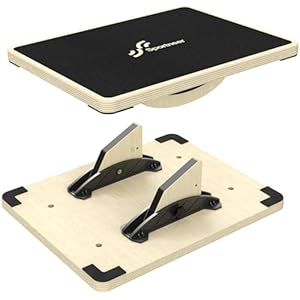
When starting your weightlifting journey as a beginner, ensuring safety is paramount. But where should you begin to make the most of your workouts? By understanding the fundamentals of proper form and gradually increasing your weights, you set the stage for progress. However, there’s more to this puzzle that you need to uncover to elevate your lifting game.
Importance of Proper Form
To lift weights safely as a beginner, ensure you maintain proper form throughout your exercises. Proper form is crucial in weightlifting as it helps prevent injuries and ensures you’re targeting the right muscles effectively. When lifting weights, focus on your posture, keeping your back straight, shoulders back, and core engaged. Avoid arching your back or rounding your shoulders, as this can strain your muscles and lead to discomfort. Additionally, make sure to use a full range of motion during each repetition to maximize the benefits of the exercise.
Maintaining proper form also involves controlling the weights throughout the entire movement. Avoid swinging or using momentum to lift the weights, as this can put unnecessary stress on your joints and reduce the effectiveness of the exercise. Instead, move slowly and deliberately, focusing on engaging the target muscles throughout the entire range of motion. Remember, quality over quantity is key when it comes to weightlifting. By prioritizing proper form, you not only reduce the risk of injury but also set yourself up for long-term success in your fitness journey.
Starting With Light Weights
Starting with light weights is a smart way to ease into weightlifting and practice proper form without overwhelming your muscles. Choosing lighter weights allows you to focus on mastering the correct techniques and movements, laying a strong foundation for future progress. It’s crucial to prioritize form over the amount of weight you’re lifting, as this will help prevent injuries and ensure you’re targeting the right muscles.
Light weights are excellent for beginners as they help build muscle endurance and coordination. By starting with lighter loads, you give your body the chance to adapt to the new movements and stress placed on your muscles. This gradual approach also reduces the risk of straining or overworking your muscles, allowing you to develop strength safely.
Gradually Increasing Intensity
Want to challenge yourself and progress in your weightlifting journey? Once you feel comfortable with the weights you’re lifting, gradually increase the intensity to continue seeing improvements in your strength and muscle tone. Progressing too quickly can lead to injuries, so it’s essential to do so in a controlled manner.
When it comes to increasing intensity, small increments are key. Start by adding a small amount of weight to your lifts, such as 5-10% more than what you were previously lifting. This gradual increase allows your muscles to adapt and grow stronger over time without putting too much strain on them.
Another way to intensify your workouts is by increasing the number of sets or repetitions you perform. For example, if you were doing three sets of an exercise, try adding a fourth set or increasing the number of reps in each set. This adjustment challenges your muscles in new ways, helping you break through plateaus and continue making progress in your weightlifting journey.
Listening to Your Body
Pay attention to the signals your body is sending during your weightlifting sessions to ensure you’re pushing yourself effectively while avoiding injury. Listen to any pain, discomfort, or fatigue your body may be communicating. It’s essential to differentiate between the normal discomfort associated with muscle exertion and the sharp pain that could indicate an injury. If you experience sharp pain, stop the exercise immediately to prevent further harm.
Additionally, pay attention to your energy levels. If you’re feeling overly fatigued or weak, it might be a sign that you need to rest or adjust your workout intensity. Ignoring these signs could lead to overtraining and potential injuries. Remember, progress in weightlifting takes time, and it’s crucial to listen to your body’s cues to avoid setbacks.
Lastly, observe your form during exercises. If you notice any significant deviations from proper form, it could be a sign of fatigue or improper technique. Maintaining good form not only prevents injuries but also ensures that you’re effectively targeting the intended muscles.
Seeking Professional Guidance
For safe and effective progression in weightlifting, consider consulting with a certified personal trainer or fitness coach. Seeking professional guidance is crucial, especially for beginners, as it can help you learn the correct techniques, prevent injuries, and set realistic goals. A qualified trainer will assess your current fitness level, understand your objectives, and tailor a workout plan specifically for you.
They can teach you the proper form for each exercise, ensure you’re using the appropriate weights, and provide feedback to improve your performance. Additionally, a trainer can guide you on how to structure your workouts, progress gradually, and avoid overtraining. Their expertise can also help you navigate the gym environment, understand equipment usage, and stay motivated throughout your fitness journey.
Cardio Training














